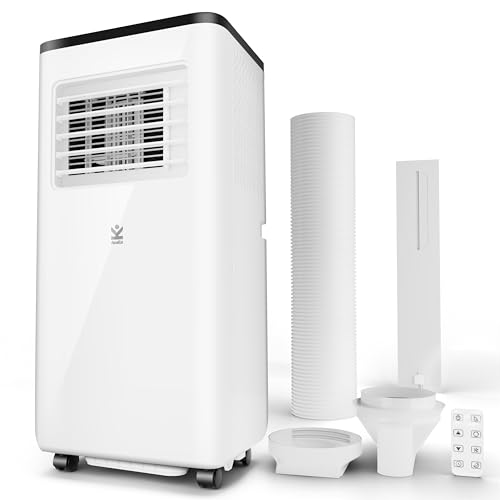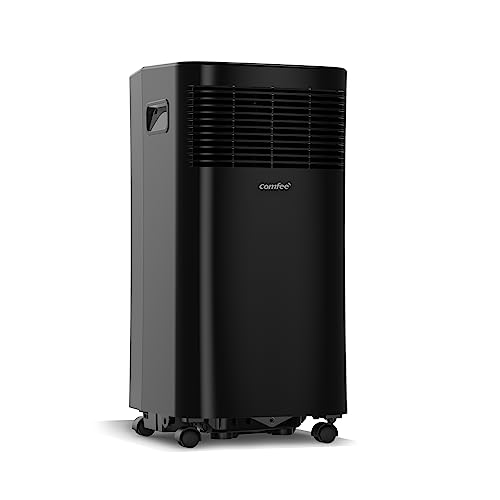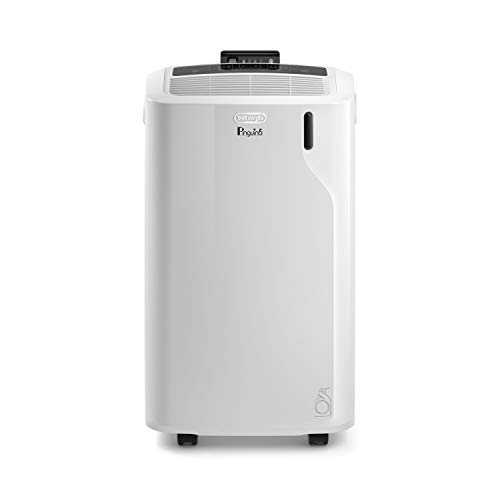Is air conditioning becoming a must have in your home? I'm an energy expert and these are the pros and cons of the main options available
Rising temperatures are beginning to change the way we view air conditioning in the UK. But what does having air conditioning in your home involve and which system is right for you? Energy expert, David Hilton outlines your options to help you decide
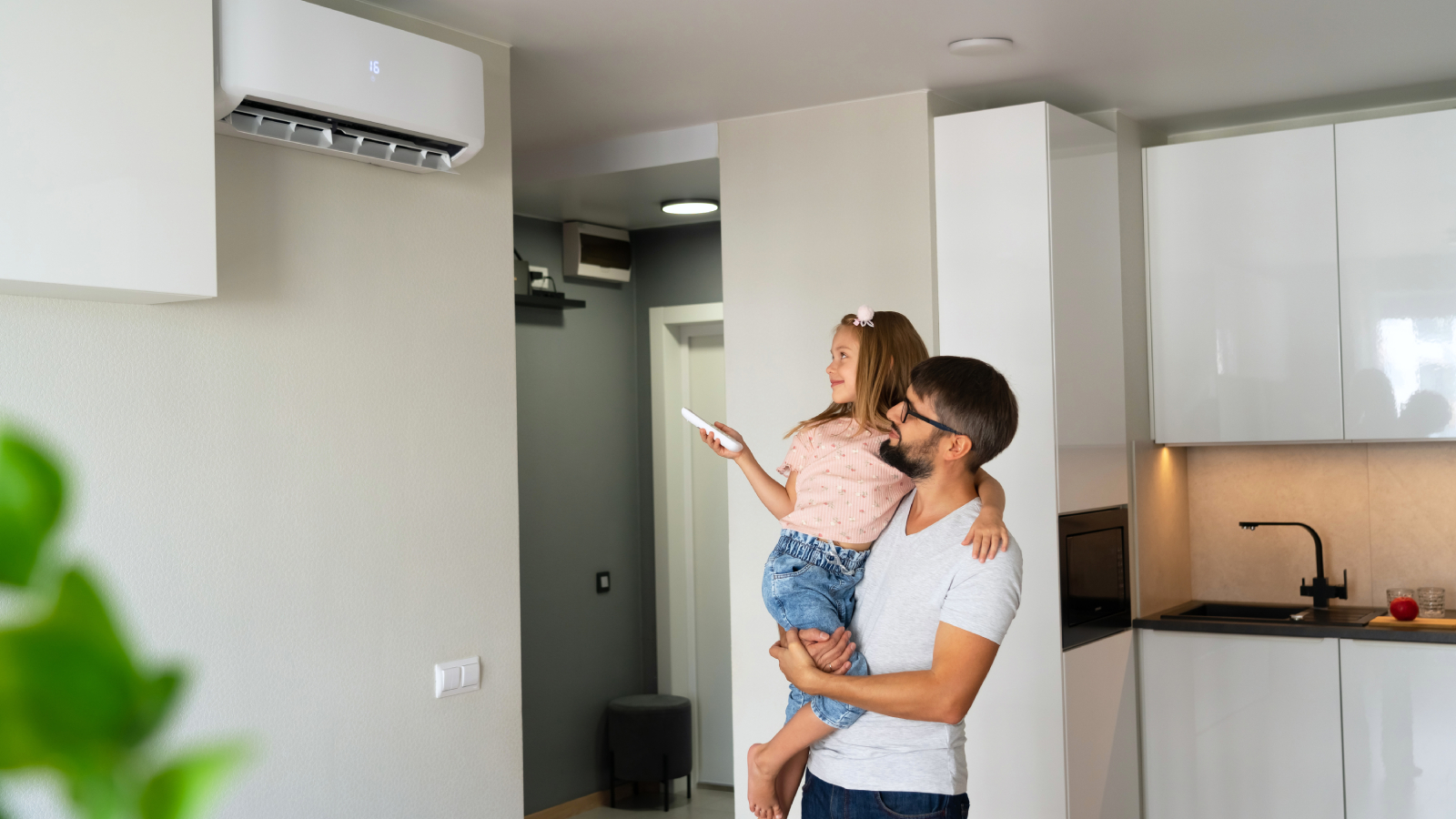
Although we are increasingly designing new build homes that take into account better heating and ventilation methods, rising temperatures during the summer months are bringing the need for air conditioning front of mind as well.
Incorporating an air conditioning system into your home can provide you with a more permanent way to deal with the increasing amount of heatwaves, but will also add to the electrical load and potentially increase bills.
And while fans were once sufficient to cool homes in the UK, hot air being blown around may not be enough of a fix, meaning there's also an increased need for portable air conditioning units too.
So what are your options and which system will be right for you? Energy expert, David Hilton explains what to consider if you're making the decision to add air conditioning to your home.
Choosing an air con system
Air conditioning is not a one-size-fits-all solution. There are a number of different types of air conditioning from portable units to fully integrated units that cover the whole home.
Deciding which one to choose will depend on if you are specifying a system for a new build, retro-fitting or simply looking for a solution you bring out during the hotter months and store away in winter.
However, air conditioning costs can also mount up, so two things are important when choosing an air conditioning system: Brand quality and installer experience. It is true that you get what you pay for and you really want to invest in a good product and get an installer who is familiar with the nuances of that particular product.
Bring your dream home to life with expert advice, how to guides and design inspiration. Sign up for our newsletter and get two free tickets to a Homebuilding & Renovating Show near you.
Speak with local installers and also check the approved installer lists of bigger brands and speak with them. Always try and get references and then speak with others who have already installed products similar to the ones that you want.
Other features you may want to consider include:
- Wifi / smart control: An air conditioning system that has connectivity to other systems is useful. You don’t want an air condition system to cool the room only for the heating system to turn on and heat it back up again. It may also be worth also having the ability to control the ventilation system as well so that there is also no conflict with the summer bypass modes. Many brands of air conditioning can be controlled from third party home automation systems so if you have one then make sure you choose a compatible brand. It is also helpful to have an app if you want to activate the air conditioning before you get home or if you happen to for get that you left it on and need to turn it off.
- Dehumidifier: Air conditioning units do act as types of dehumidifiers. When air is cooled the water vapour in the air condenses and is no longer in the air, thus lowering the humidity.
- Heating: Most split type air conditioning units can be used as a heater as well but not all portable units will be able to offer this function.
In this guide we'll take a look at the pros and cons of the main options available to you: portable air conditioning units, fixed systems and air to air heat pumps.
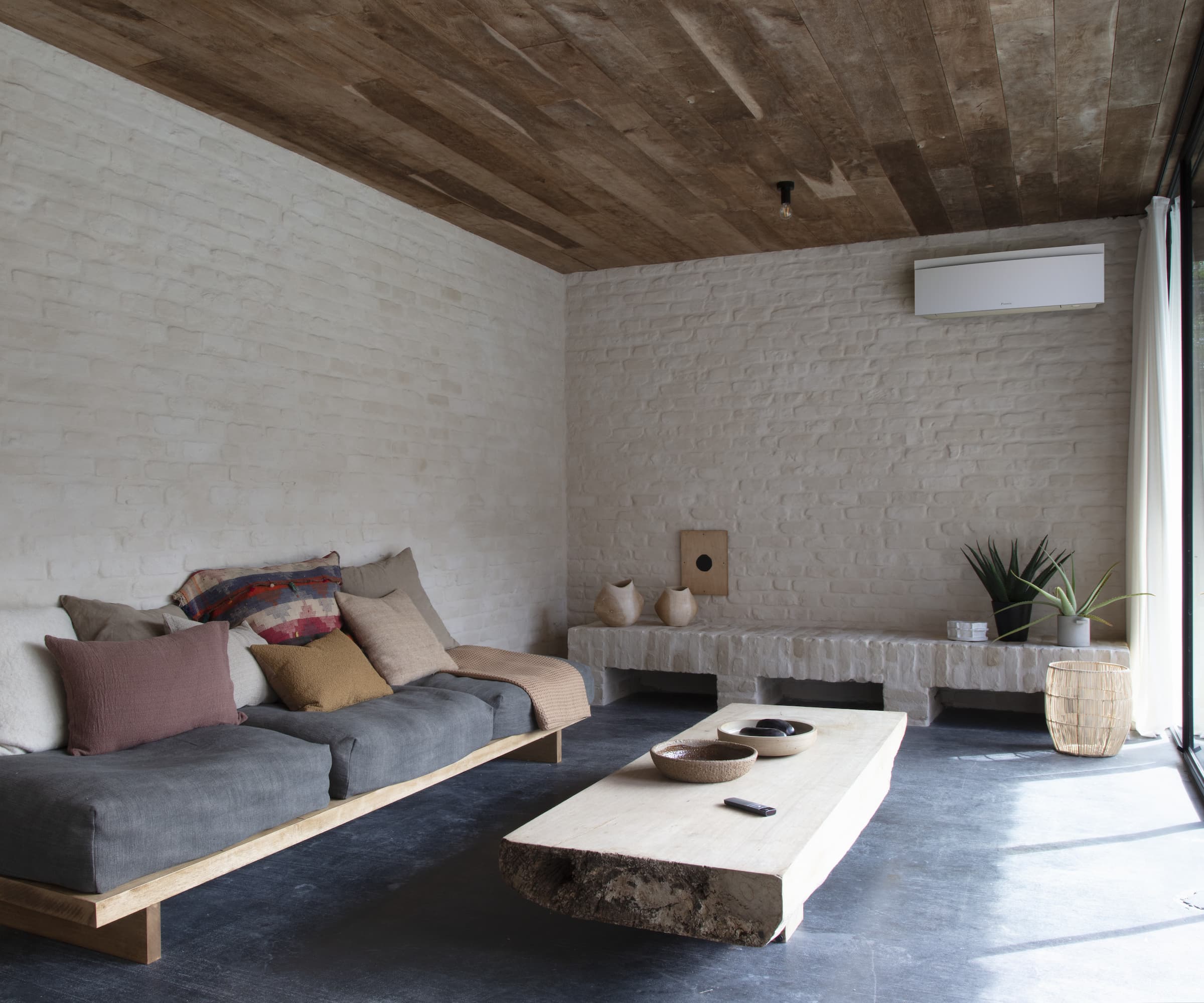
Portable air conditioning: pros and cons
As a short-term solution, and potentially the simplest choice, you could consider the best portable air conditioning units. Unlike fans which simply move air around, air conditioning units generate cool air.
Around the same size as a kitchen bin, if you understand how portable air conditioners work, you'll know they are plugged into a wall socket but do however usually need to be located near a window as they are externally vented via a flexible duct. You will also require a container to capture the condensation produced.
The most effective units are refrigerant-based air conditioning units such as the Olsen & Smith 7000 3-in1 Portable Air Conditioning Unit from Amazon, as they are more suited to the UK climate. Evaporative coolers use less energy than refrigerant-based coolers as they work on the principle of blowing air through a fine ‘curtain’ of water that then evaporates and introduces a cooling effect.
However, they need to have a supply of dry air and the resultant ‘moist’ air needs to be exhausted at the opposite end of the room. This is ideal in hot, dry climates such as Australia but in the UK the humidity levels can be too high, and cross ventilation too impractical for any actual cooling.
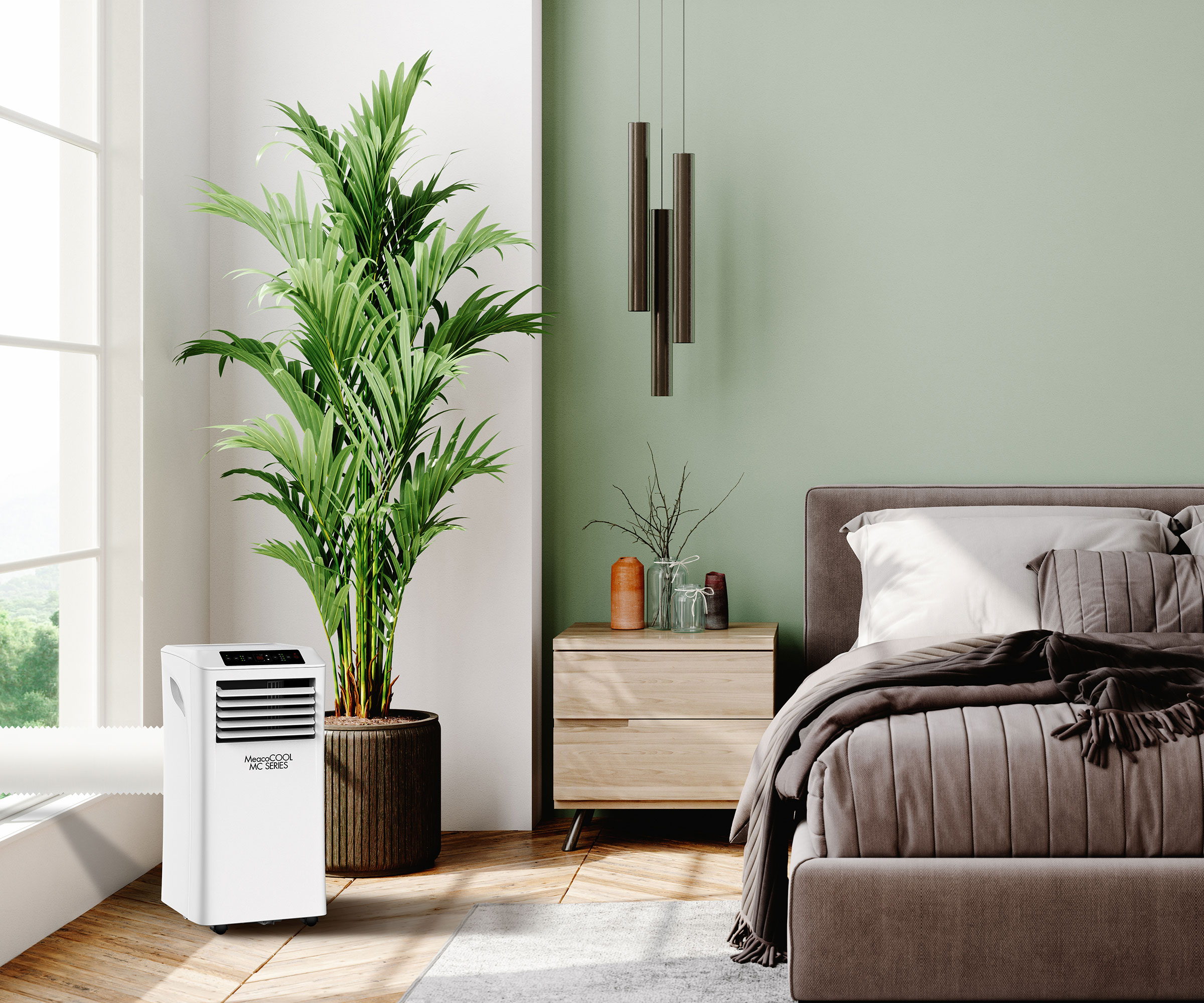
Pros and cons — portable air conditioning units
The main benefit of a portable air conditioning unit over a fixed whole home system is that it can be easily moved from room to room, used when and where necessary, and with far less expense than installing an air conditioning system.
Another positive is that many units also work as heaters and dehumidifiers too, giving them increased versatility and saving you the need to find somewhere for them in your loft storage. Instead, you can switch the mode to help reduce the risk of condensation and mould in your home once the colder months are in full flow.
However, portable systems tend to generate more air conditioning noise than installed units. You'll also need to keep the window open in order to vent the resultant heat, which can be a security risk and may result in disturbed sleep due to potential noise.
And, if you're keen to keep a lid on your energy bills, you'll need to work out how much it costs to run a portable air conditioner in order to make sure you are comfortable in accommodating the extra costs each summer. Although combining use of a portable system with the best ways to cool a room can help to keep your costs in check.
Shop portable air conditioning units
Fixed air conditioning: pros and cons
While you can pick up a portable air con unit at a store or online and set it up yourself, installing air conditioning on the other hand needs to be done by a registered gas engineer.
In split systems, there is a fan unit that is located outdoors and is connected via copper pipework and electrical connections to an indoor unit that delivers the cool air. However, it is possible to run more than one indoor unit using just one external unit. The indoor unit can take a number of different forms:
- A high wall bulk-head unit is a bulk-head that is mounted on the wall and is about the size of a couple of shoe boxes
- Low wall units that look similar to standard radiators
- Ceiling cassettes which can be mounted in the ceiling in a central area of the room
- Discreet slim-ducted units that can be positioned in the ceiling or housed in grilled boxes above cupboards or near doors (similar to ones you may have seen in hotels)
Ducted systems (more suitable for a self build as they can be installed during the build) can also direct the air to more than one outlet through a number of ducts, with separate dampers in each duct for individual room control. These ducts must be insulated to avoid condensation.
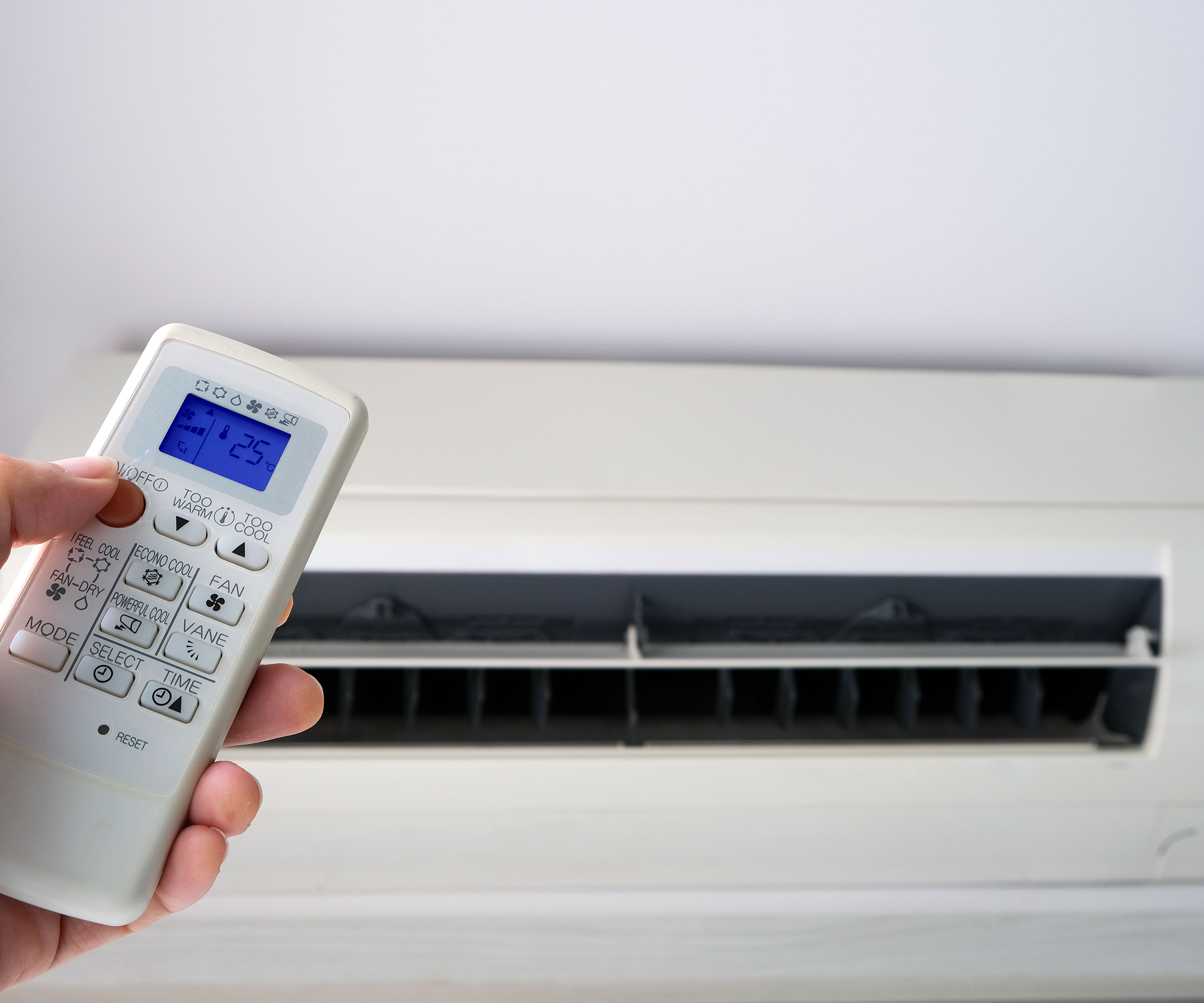
Pros and cons of fixed air conditioning
Split air conditioning systems cost more to install than portable units and also cannot be moved around. Plus the fact they are installed means if you are retrofitting, you need to take into account the potential disruption.
A multi split system however could provide cooling across more than one room, avoiding the need to purchase multiple portable air conditioning units or air coolers (a cheaper alternative).
There are also usually more powerful, do not need the window to be open with a big duct through them and can often do cooling and heating, sometimes even simultaneously.
In larger properties and commercial buildings you can also use Variable Refrigerant Flow (VRF) systems that can have more than 10 indoor units connected to them. Some also have the option of adding a hydrobox so that the system can operate as an air-to-water heat pump, heating the hot water for showers and washing, as well as providing central heating through underfloor heating or convection radiators. Some brands have also introduced ‘heat recovery’ systems to the VRF units so that you can then cool your room and heat your water with the resultant heat.
However, with any type of ducted system, installing them during a self build project or a major renovation is the best option instead of in a newly completed home.
Air to air systems: pros and cons
Systems designed and used mainly for heating are often referred to as air-to-air heat pumps and they should have an option to reverse the refrigeration cycle if cooling is required. The vapour compression cycle still offers over 300% efficiency and so it is a far more efficient form of heating than direct electric. It is also far less disruptive to install on a retrofit basis.
Air-to-air systems are very often installed as secondary heating systems. Air has the specific heat capacity of one, whereas denser products have higher specific heat capacity and store up to around four times more heat. Air can therefore heat up and cool down far quicker with the same amount of energy transfer, and heating systems that target the air can have a far quicker reaction time.
The primary heating system may be connected to underfloor heating, which is slow to react, so an air-to-air system can boost the air temperature by a few degrees on demand. As such, this may also be a valuable feature in homes where certain rooms are used only occasionally, or there is a home office for example, that needs heat during the day, while the rest of the rooms stay unused..
Pros and cons of air to air systems
Air to air systems offer a more efficient form of cooling and heating than direct electric. They are less disruptive to install on a retrofit basis and particularly useful for homes where rooms are only used occasionally.
However, you will also want to be considering changes to your heating at the same time to maximise on what this type of system offers.
FAQs
Can MVHR provide cooling?
MVHR (mechanical ventilation heat recovery) systems are not primarily air conditioning units – they are designed to be ventilation systems.
However, some MVHR units do have a micro compressor and reversible heat pump to add heating or cooling to the incoming air. These units only operate at around half an air change per hour, with the fresh air always starting at ambient outdoor temperature.
This means that heating or cooling is only usually enough to maintain the temperature in the home rather than actively create temperature change or to serve as the primary heating or cooling system.
Proper air conditioning, on the other hand, recirculates the internal air at a faster rate to facilitate the change in temperature.
Where will I need to put the outdoor unit?
Air conditioning systems have a maximum pipe length that can be used between the indoor and outdoor unit. If you have more than one indoor unit you will have two critical lengths to be aware of. There is a maximum length between the outdoor unit and any indoor unit and there is also a maximum overall pipe length.
For example, you might have a multi-split air conditioning system with 5 indoor units and there could be a maximum individual pipe length of 25 metres but the overall maximum pipe length is only 75 metres. Therefore, if 4 of the indoor units needed 20 metres of pipe you would not be able to use this product. These capabilities change from manufacturer to manufacturer so make sure you choose carefully.
Do air con systems need a lot of maintenance?
Air conditioning systems often require annual servicing to check the refrigerant levels, filters and make sure there have been no leaks. Filters need to be cleaned and any air paths and heat exchangers kept clean. A visual inspection of the pipework and insulations, and the structural integrity of the physical unit and any electrical connections, is also a good idea.
Small portable systems do not need servicing other than checking any filters and condensate drains for blockages and a visual check of the unit to make sure there is no structural damage or electrical faults.
Once you've decided on the best air conditioning for your home, make sure you're also aware of these air conditioning mistakes so you can truly get the best out of your cooling system. Or, if you're still at the design stage, make sure you also understand how to prevent overheating so that you employ as many techniques as possible to keeping the temperature down inside when the mercury rises outside.
David is a renewables and ventilation installer, with over 35 years experience, and is a long-standing contributor to Homebuilding and Renovating magazine. He is a member of the Gas Safe Register, has a Masters degree in Sustainable Architecture, and is an authority in sustainable building and energy efficiency, with extensive knowledge in building fabrics, heat recovery ventilation, renewables, and also conventional heating systems. He is also a speaker at the Homebuilding & Renovating Show.
Passionate about healthy, efficient homes, he is director of Heat and Energy Ltd. He works with architects, builders, self builders and renovators, and designs and project manages the installation of ventilation and heating systems to achieve the most energy efficient and cost effective outcome for every home.
